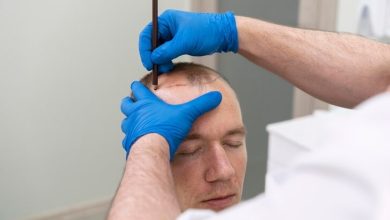7 Kinds of Equipment Every Hospital Needs

The healthcare industry is one of the most important industries globally, and hospitals play a vital role in providing healthcare services to people. One of the most important aspects of hospital management is the use of appropriate medical equipment. Without the necessary medical equipment, hospitals cannot provide the care that patients require.
Below are seven kinds of equipment every hospital needs.
-
Diagnostic Imaging Equipment
In order to diagnose patients’ diseases and deliver the best therapy possible, diagnostic imaging technology is essential. These devices use cutting-edge technology to provide images of inside organs and structures that aid medical professionals in spotting any anomalies or health problems.
Electromagnetic radiation is used by X-ray devices to create images of bones and other dense tissues. They are especially helpful for identifying fractures, infections, and other problems with the bones. X-rays are used by CT (computed tomography) scanners to produce precise images of inside organs and tissues. Cancer, infections, and other illnesses can be diagnosed with CT scans.
MRI (magnetic resonance imaging) machines produce images of internal organs and tissues using a magnetic field and radio waves. Tumors, strokes, and joint injuries are just a few of the numerous problems that MRIs can assist in identifying. High-frequency sound waves are used by ultrasound devices to produce images of developing fetuses, blood vessels, and soft tissues. They are especially helpful for identifying ailments of the kidneys, pancreas, and liver.
-
Patient Monitoring Systems
Patient monitoring systems must monitor the patient’s vital signs and health parameters, such as heart rate, blood pressure, respiratory rate, and oxygen saturation levels. With the use of this technology, medical professionals can identify any potential health issues early on and take prompt action.
Numerous kinds of patient monitoring equipment exist, such as wearable gadgets, telemetry systems, and bedside monitors. Patients that need close monitoring and are frequently kept in intensive care units use bedside monitors. Healthcare professionals can monitor their patient’s vital signs using telemetry devices, which use wireless technology to do so. Patients who need constant monitoring but can move around more easily, such as those who are recovering from surgery, frequently use wearable devices.
-
Operating Room Equipment
In order to ensure the safety and effectiveness of surgical treatments, operating room equipment is essential. These tools include operating rooms, anesthetic machines, operating room lights, and surgical tools.
In order to make patients comfortable and pain-free during surgical procedures, anesthetic machines are utilized to administer anesthesia to patients. Surgical lights adequately illuminate the operating room, enabling doctors to see well while performing surgery. Surgeons employ surgical tools, including scalpels, forceps, and retractors, to carry out the surgical procedure.
-
Respiratory Therapy Equipment
Patients with respiratory issues, such as those with COPD, asthma, or pneumonia, require respiratory treatment equipment. Nebulizers, ventilators, and oxygen concentrators are some of this equipment. Patients who have trouble breathing can receive oxygen through oxygen concentrators. They increase the oxygen content of the air by removing nitrogen, then supply it to the patient via a mask or nasal cannula.
To help treat the symptoms of respiratory disorders, nebulizers are used to deliver medication directly to the lungs. Patients who are unable to breathe on their own are given mechanical ventilation using ventilators. They assist in maintaining regular respiratory function by supplying oxygen and removing carbon dioxide from the patient’s body.
-
Infusion Pumps
Direct administration of drugs, fluids, and nutrients into a patient’s bloodstream is accomplished with the aid of infusion pumps. For patients who need intravenous therapy, such as those with cancer, diabetes, or kidney disease, they are crucial. Patients always receive the right medication dosage at the appropriate time, which provides exact medication dosages at predetermined intervals.
Infusion pumps come in various designs, such as volumetric, syringe, and elastomeric pumps. Syringe pumps use a syringe to deliver medication in exact amounts, whereas volumetric pumps give a predefined volume of medication over a predetermined length of time. Elastomeric pumps employ a flexible container that delivers medication gradually over a predetermined period of time.
-
Sterilization Equipment
In order to maintain a sterile environment in healthcare facilities, stop the spread of illness, and guarantee patient safety, sterilization equipment is crucial. Autoclaves, sterilizers, and disinfection systems are some of these equipment.
Autoclaves employ high-pressure steam to sterilize medical items. They work well at eliminating viruses, germs, and other microbes that might be on medical equipment. Other techniques, such as gas or radiation, are used by sterilizers to sanitize medical equipment. Disinfectant systems use chemicals to clean surfaces like floors, walls, and worktops.
-
Exam Tables
Hospitals require exam tables for a number of reasons. One of the primary reasons is to provide a safe and comfortable surface for patients during medical examinations. These tables are specifically designed to accommodate patients of all sizes and ages, making it easier for healthcare professionals to conduct thorough examinations. Additionally, exam tables can be equipped with various features such as adjustable heights, stirrups, and storage drawers that make them highly functional and versatile.
While new exam tables can be expensive, many hospitals opt for used medical equipment to save costs without compromising quality. This allows hospitals to allocate their resources toward other critical areas of patient care. Overall, exam tables are an essential piece of medical equipment that help hospitals provide quality care to their patients.
Conclusion
Hospitals need specific equipment to give patients the best care possible. Patient monitoring systems and diagnostic imaging devices both assist medical professionals in the early detection of potential health issues.
While respiratory therapy equipment helps patients with respiratory infections breathe more easily, operating room equipment ensures the safety and effectiveness of surgical treatments. Infusion pumps are crucial for patients who need intravenous therapy, and sterilizing equipment keeps healthcare facilities hygienic. Exam tables provide a comfortable and safe environment for patients during medical examinations.
All in all, hospitals can give patients the best care possible by investing in this necessary equipment, enhancing patient outcomes and general quality of life.




